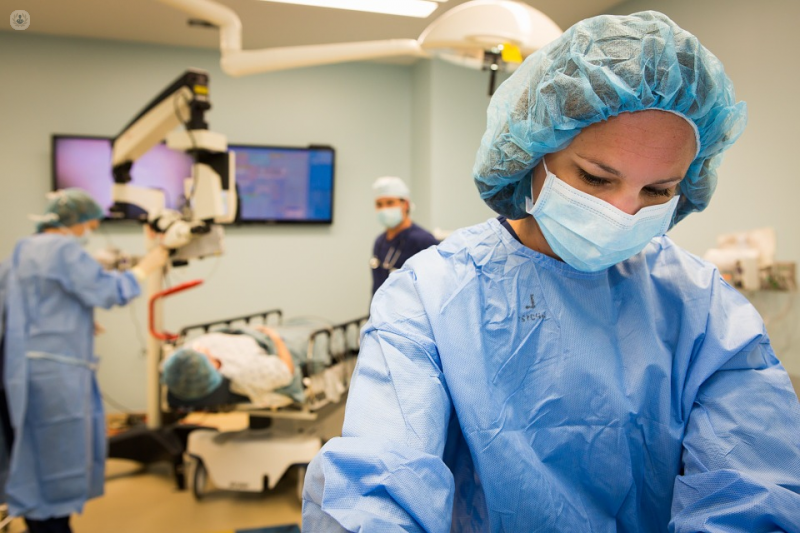Hyperthermia therapy
Dr Sachin Trivedi - Medical oncology
Created on: 01-25-2016
Updated on: 03-08-2024
Edited by: Kate Forristal
What is oncological hyperthermia?
Oncological hyperthermia is an alternative technique for treating cancer tumours which aims to destroy the tumour through heat. Hyperthermia was the first treatment for cancer in human history, but due to poor accuracy and the risks involved, it is no longer part of standard medical treatment for cancer. However, there are a limited number of clinical trials in the UK looking at whether modern technologies can deliver heat treatment in a much more targeted and controllable fashion. You should see a clinical oncologist for treatment.

Why is oncological hyperthermia performed?
Oncological hyperthermia is performed for several important reasons:
Enhancing treatment efficacy: One of the primary goals of oncological hyperthermia is to enhance the effectiveness of other cancer treatments such as chemotherapy and radiation therapy. Elevating the temperature of the tumour or the entire affected area can make cancer cells more susceptible to the damaging effects of these therapies, ultimately improving their success rates.
Sensitising cancer cells: Hyperthermia can sensitise cancer cells to radiation and certain chemotherapeutic drugs. It weakens the cellular defences of cancer cells, making them more vulnerable to the treatment, and can potentially increase the chances of complete tumour regression.
Increasing blood flow: Elevated temperatures can lead to improved blood flow in the tumour site. This increased blood flow can help deliver more oxygen and nutrients to the cancerous tissue, enhancing the effectiveness of treatments and potentially reducing the risk of resistance.
Direct cytotoxic effects: Hyperthermia can have direct cytotoxic (cell-killing) effects on cancer cells. High temperatures can damage the structural integrity of cancer cells, leading to their destruction.
Alternative therapy: In some cases, hyperthermia can be used as a standalone therapy, especially when other treatments are not feasible or effective. This provides patients with an alternative approach to manage their cancer.
Palliative care: Hyperthermia can also be used in palliative care settings to alleviate symptoms and improve the quality of life for cancer patients. It may help reduce pain and discomfort associated with tumours.
Ongoing research: Current research is exploring the potential of hyperthermia to improve cancer treatment outcomes further. Scientists are continually investigating its mechanisms, refining techniques, and studying its compatibility with emerging therapies.
What does oncological hyperthermia consist of?
Hyperthermia consists of applying a thermal field that focuses on the area where the malignant tumour is located. Access to the tumour depends on where it is so the invasiveness of the procedure varies. Depending on the size of the tumour and its aggressiveness, you may need multiple courses of treatment.
When combined with other treatments, such as chemotherapy, some forms of hyperthermia can be carried out without side effects as the cells are only treated to a few degrees above body temperature.
Aftercare
As with all cancer treatments, it is important to have follow-up tests and scans to check on the progress of the tumour. Depending on the results, your doctor may recommend further hyperthermia treatment, or another form of cancer treatment.
